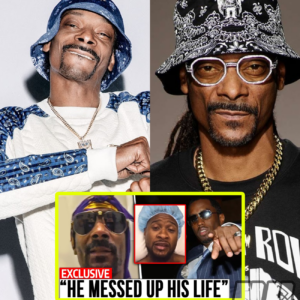Donald Trump’s Midnight Rants and Misleading Mistrial Claims: Unpacking the Disturbing Trend

Introduction
Former President Donald Trump has once again captured media attention with a series of late-night posts on his social media platform. These posts, filled with calls for a mistrial and unfounded allegations of a rigged jury, underscore a troubling pattern of misinformation and manipulation. Despite clear evidence debunking his claims, Trump and his supporters continue to push false narratives, raising concerns about the impact on public trust in the judicial system and the political climate.
The Mistrial Rhetoric
In a recent series of posts, Trump has been fixated on the idea of a mistrial in ongoing legal proceedings. He has repeatedly referenced a prank Facebook post by an individual who claimed to have a cousin on the jury. This individual, whose online presence includes a photograph of the infamous punk rock musician GG Allin and a history of inflammatory posts, openly admitted to fabricating the story to provoke a reaction. Despite the clear evidence that this was a malicious prank, Trump and his allies have seized upon it, insisting that the jury is compromised and calling for an investigation.
Media Coverage and the Role of Social Media
Trump’s posts have been amplified by right-wing media figures, such as Jack Posobiec, who echoed the mistrial claims despite their baselessness. Judge Juan Merchan, presiding over the case, informed the parties involved about the prank post, demonstrating transparency and impartiality. However, Trump and his supporters have twisted this action into further evidence of a biased system, despite it being a standard procedure in such situations.
This phenomenon highlights a broader issue with how misinformation spreads through social media. The rapid dissemination of unfounded claims and the echo chamber effect within certain media circles contribute to the persistence of these false narratives. Trump’s midnight rants, therefore, serve not just as a reflection of his personal grievances but as a tactic to sway public opinion and undermine trust in the judicial process.
The Impact on Public Perception
The continuous repetition of false claims, even after they have been debunked, is a tactic that Trump has employed throughout his political career. By flooding social media with posts asserting a rigged jury and a biased legal system, he aims to create doubt and foster a sense of victimization among his supporters. This strategy mirrors his actions during the 2020 election, where he relentlessly pushed the narrative of a stolen election despite a lack of evidence.
The consequences of this approach are significant. By eroding trust in key institutions, Trump not only destabilizes the immediate legal proceedings but also damages the broader fabric of democratic governance. This tactic of sowing distrust is particularly effective among his base, who are more likely to consume media that reinforces their existing beliefs.
Maga’s Reaction and Propaganda
Trump’s posts have found a receptive audience among his supporters, who have echoed his calls for a mistrial and further investigations. Figures like Laura Loomer have amplified these claims, disregarding the clear evidence of their falsehood. This pattern of behavior is reminiscent of the promotion of conspiracy theories, such as the debunked claims in Dinesh D’Souza’s “2000 Mules.”
The persistence of these falsehoods within the Maga community highlights a broader trend of rejecting inconvenient truths in favor of comforting lies. This environment, where reality is shaped by repetition rather than evidence, allows Trump to maintain a grip on his supporters despite mounting legal troubles and public scrutiny.
Economic Claims and Political Spin
In addition to his legal complaints, Trump has also attempted to rewrite the narrative around his economic policies. In another late-night post, he falsely claimed credit for lowering insulin prices, a policy actually enacted by the Biden administration through the Inflation Reduction Act. This tactic of taking credit for the accomplishments of others while deflecting blame for failures is a hallmark of Trump’s rhetorical style.
The Biden administration has been proactive in countering these false claims, emphasizing their own achievements in economic recovery and healthcare reform. The recent job reports, which exceed expectations, and the decrease in gas prices, further undermine Trump’s narrative of economic doom under Biden.
Conclusion
Donald Trump’s recent spate of 1 a.m. posts, filled with calls for a mistrial and misleading economic claims, underscores a disturbing trend in his communication strategy. By flooding social media with falsehoods and manipulating public perception, he continues to erode trust in critical institutions and polarize the political landscape. It is essential for the media and the public to critically examine these claims and hold Trump accountable for the impact of his rhetoric. Only through rigorous scrutiny and a commitment to truth can we hope to mitigate the damage caused by such relentless misinformation.
News
(VIDEO) Celebs that P Diddy EXPLOITED for Cash
P Diddy and the Dark Side of the Entertainment Industry The entertainment industry is no stranger to scandal and controversy, but the recent revelations surrounding P Diddy (Sean Combs) have brought to light a web of disturbing allegations and connections…
(VIDEO) Kevin Hart IN TEARS After New Leaks EXPOSE Him At Diddy’s After Parties!!
Kevin Hart: A Complex Journey Through Fame, Scandal, and Personal Growth Kevin Hart, the renowned comedian and actor, has led a life marked by both incredible professional success and deeply personal scandals. His journey from selling sneakers to becoming one…
(VIDEO) “He Ruined My Life” Former Diddy Employees TEAM UP To EXPOSE Him!
The Dark Side of Fame: Allegations Against Diddy and the Revelations from Former Employees The music industry is often glamorized for its glitz and glamour, but behind the scenes, it can harbor dark secrets and troubling behavior. Recently, Sean “Diddy”…
(VIDEO) “He’s Why Justin Bieber Is DEPRESSED!” Undercover FBI Agent EXPOSES Diddy
The Tumultuous History of Snoop Dogg, P. Diddy, and the East Coast-West Coast Rivalry Hip-hop history is fraught with feuds, friendships, and ever-changing alliances. Central to many of these stories are iconic figures such as Snoop Dogg and P. Diddy…
(VIDEO) “Diddy Did Usher Dirty Forever” Snoop Dogg EXPOSES Sean Combs!
The Tumultuous History of Snoop Dogg, P. Diddy, and the East Coast-West Coast Rivalry Hip-hop history is fraught with feuds, friendships, and ever-changing alliances. Central to many of these stories are iconic figures such as Snoop Dogg and P. Diddy…
(VIDEO) Undercover CIA Agent EXPOSES Diddy & Jay Z!
The Fall of P. Diddy: A Dismantling of Credibility and the Unfolding Legal Crisis Introduction In recent years, Sean “P. Diddy” Combs has found himself at the epicenter of numerous controversies and legal battles that have significantly tarnished his once-polished…
End of content
No more pages to load











